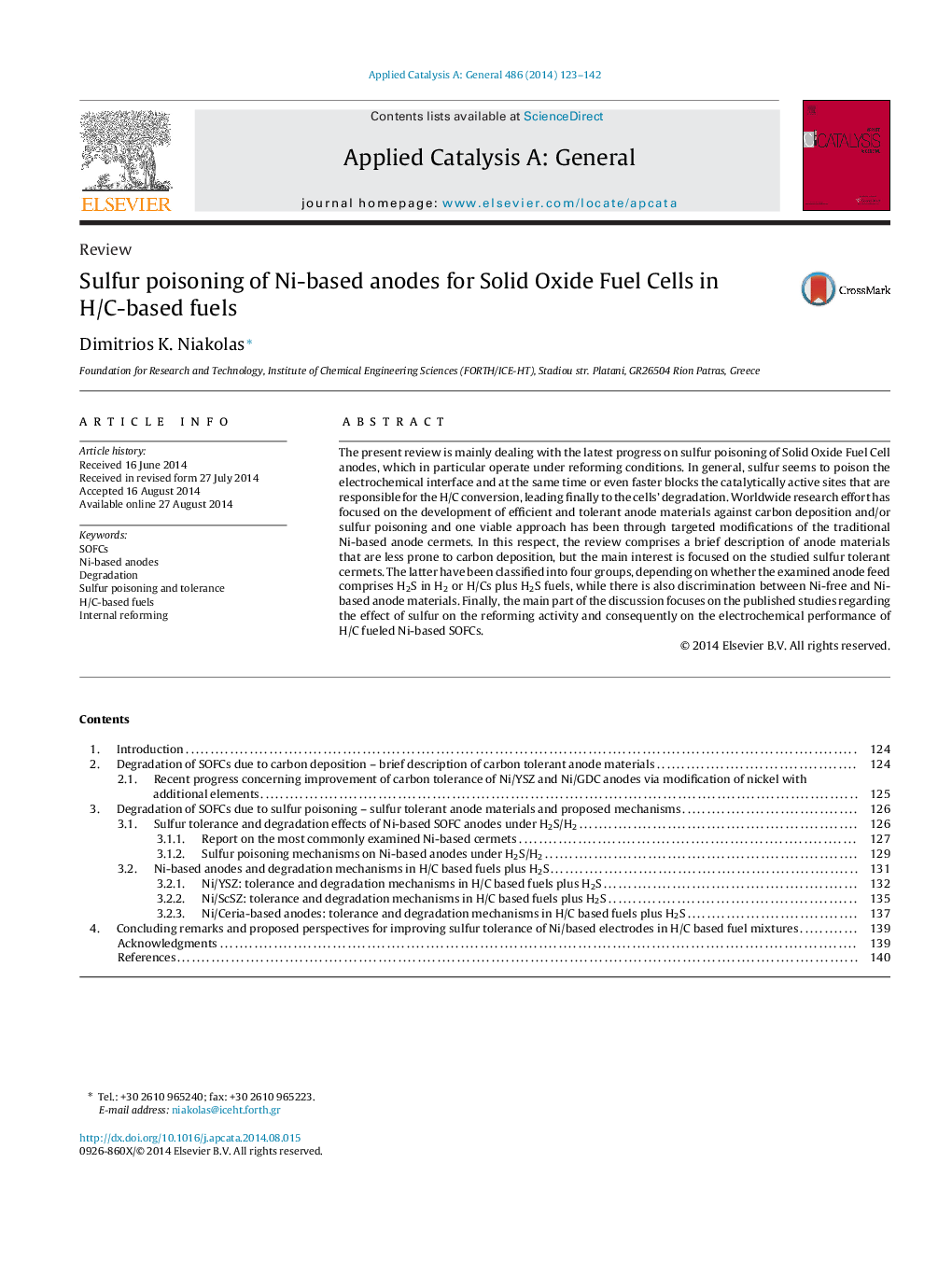| Article ID | Journal | Published Year | Pages | File Type |
|---|---|---|---|---|
| 39439 | Applied Catalysis A: General | 2014 | 20 Pages |
•S poisoning is one important issue for the SOFCs operation, especially with H/C-based feeds.•S poisons the interface between the anode and the electrolyte, where the electrochemical processes take place.•S adsorbs and blocks the catalytically active sites that are responsible for the H/C conversion.•Apart from Ni the cermet should comprise an oxide, which can contribute to the reforming activity.•Ni-alloys via the modification of SoA Ni-based cermets could offer an effective approach for improving C & S resistance.
The present review is mainly dealing with the latest progress on sulfur poisoning of Solid Oxide Fuel Cell anodes, which in particular operate under reforming conditions. In general, sulfur seems to poison the electrochemical interface and at the same time or even faster blocks the catalytically active sites that are responsible for the H/C conversion, leading finally to the cells’ degradation. Worldwide research effort has focused on the development of efficient and tolerant anode materials against carbon deposition and/or sulfur poisoning and one viable approach has been through targeted modifications of the traditional Ni-based anode cermets. In this respect, the review comprises a brief description of anode materials that are less prone to carbon deposition, but the main interest is focused on the studied sulfur tolerant cermets. The latter have been classified into four groups, depending on whether the examined anode feed comprises H2S in H2 or H/Cs plus H2S fuels, while there is also discrimination between Ni-free and Ni-based anode materials. Finally, the main part of the discussion focuses on the published studies regarding the effect of sulfur on the reforming activity and consequently on the electrochemical performance of H/C fueled Ni-based SOFCs.
Graphical abstractFigure optionsDownload full-size imageDownload high-quality image (226 K)Download as PowerPoint slide
